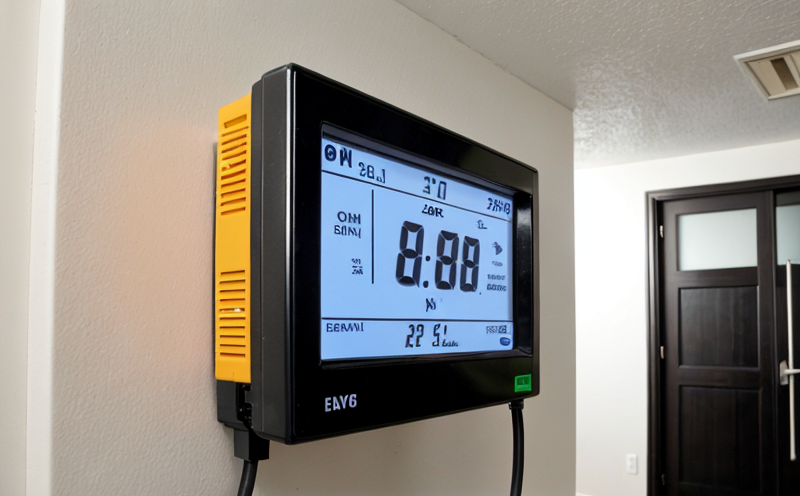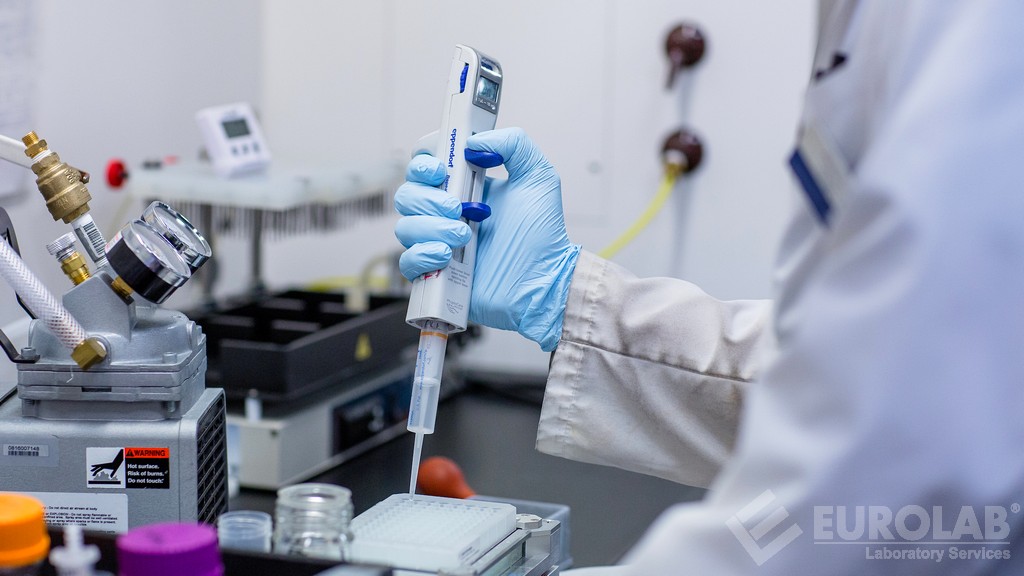ISO 17741 Energy Audit Testing of Industrial Facilities
The International Standard ISO 17741 provides a framework for energy audits in industrial facilities. This service is designed to help organizations identify and quantify opportunities for improving the energy efficiency of their operations. By conducting an energy audit based on this standard, companies can better understand where they are using more resources than necessary, which helps them make informed decisions about implementing cost-effective improvements.
Energy audits involve a detailed examination of how much energy is being used in different parts of an industrial facility. This includes assessing the efficiency of equipment and systems such as boilers, chillers, lighting, and motors. The audit also looks at operational practices that could be modified to reduce waste. For example, certain processes might be optimized by adjusting temperature settings or scheduling maintenance more effectively.
Once the energy use is characterized, the auditor will compare it against benchmarks established in ISO 17741. This comparison helps identify areas where there are inefficiencies and suggests practical actions that could lead to significant savings without compromising productivity or quality. The results of these audits often reveal opportunities for implementing new technologies like variable frequency drives (VFDs) on motors, upgrading insulation materials, or even changing operational practices such as scheduling HVAC systems during off-peak hours.
The process begins with a detailed site visit where the auditor meets with facility management teams to discuss current operations and any concerns regarding energy consumption. During this meeting, the team can provide insights into typical working conditions that may affect energy usage patterns. Afterward comes the technical phase involving measurements of various parameters relevant to energy efficiency, including but not limited to electricity consumption levels, thermal emissions, water usage rates, and air quality indices.
The collected data is then analyzed using advanced software tools tailored specifically for industrial facilities. These programs allow analysts to model different scenarios based on proposed changes suggested during the audit process. This modeling helps predict potential outcomes before any modifications are implemented physically within the plant. Additionally, it allows stakeholders involved in planning such projects to visualize expected improvements clearly.
After completing all necessary analyses and evaluations, a comprehensive report is prepared detailing findings from the energy audit along with recommendations for addressing identified issues. The report typically includes detailed descriptions of current performance levels compared against industry standards set forth by ISO 17741; specific suggestions for improvement; estimated costs associated with implementing each recommendation; projected payback periods for those investments; and expected reductions in greenhouse gas emissions resulting from implemented measures.
Implementing the recommendations outlined in an energy audit conducted according to ISO 17741 can result in substantial benefits for industrial facilities. These include reduced operational expenses due to lower utility bills, enhanced reputation among customers who appreciate sustainable practices, compliance with regulatory requirements related to environmental protection, and increased competitiveness within competitive markets.
By adhering strictly to the guidelines provided by ISO 17741 when performing energy audits of industrial facilities, laboratories ensure accuracy and consistency in their assessments. This approach fosters trust between clients and service providers while providing reliable information that can drive meaningful improvements towards greater sustainability across various sectors including manufacturing, construction, transportation, and utilities.
Why It Matters
The importance of energy efficiency cannot be overstated in today's world. With increasing concerns about climate change and resource depletion, industries are under pressure to reduce their environmental footprint while maintaining profitability. ISO 17741 plays a crucial role here by offering a standardized methodology for conducting thorough assessments of industrial facilities' energy consumption.
Conducting an energy audit based on this standard ensures that no aspect of the facility's operations goes unchecked. It allows organizations to pinpoint precisely where they are losing money through unnecessary expenditures on electricity, fuel, or other forms of power. By focusing efforts on these areas first, businesses can achieve immediate cost savings which can be reinvested into more productive activities.
Moreover, adhering to ISO 17741 helps companies stay compliant with local regulations and international agreements aimed at reducing carbon footprints. Many countries have implemented stringent laws mandating regular energy audits for large enterprises. Failure to comply can result in hefty fines or even legal action against non-compliant firms. Thus, compliance through rigorous auditing processes not only mitigates risks but also enhances an organization's reputation as a responsible corporate citizen.
Another critical benefit of ISO 17741 lies in its ability to drive innovation within industrial settings. As auditors identify inefficiencies and suggest corrective actions, they often spark discussions about adopting cutting-edge technology solutions that can further enhance overall performance. For instance, after discovering outdated HVAC systems consuming excessive amounts of energy, managers may explore options like smart thermostats capable of learning occupant preferences automatically or installing solar panels to generate renewable power locally.
Lastly, conducting regular audits according to ISO 17741 fosters a culture of continuous improvement within industrial facilities. Continuous monitoring allows organizations to track progress over time and adjust strategies accordingly as market conditions evolve or new technologies become available. This proactive approach ensures that facilities remain at the forefront of efficient operations, ensuring long-term sustainability.
Customer Impact and Satisfaction
Customers benefit significantly from energy audits performed in accordance with ISO 17741 because these assessments lead to tangible improvements in how industrial facilities operate. When an organization adopts more sustainable practices rooted in sound energy management principles, it demonstrates its commitment to environmental stewardship—a trait increasingly valued by consumers.
For instance, if a company successfully reduces its electricity bill through implementing the recommendations from an ISO 17741-compliant audit, they can pass those savings onto their customers either directly via lower prices or indirectly by investing surplus funds back into product development. Either way, such actions enhance customer satisfaction and loyalty.
Additionally, businesses that prioritize energy efficiency tend to have healthier bottom lines since they spend less on utilities. This financial stability translates to better service quality because companies can allocate more resources towards maintaining high standards across all aspects of their operations—from production processes to customer support teams.
In terms of reputation building, organizations that embrace ISO 17741 and its associated audit practices gain significant advantages in the marketplace. Potential clients appreciate doing business with firms committed to reducing their environmental impact. Moreover, regulatory bodies often favor entities demonstrating robust compliance measures like those prescribed by this international standard. Therefore, participating in such audits can open up new market opportunities for companies looking to expand geographically or enter into partnerships.
Ultimately, the satisfaction derived from an ISO 17741-compliant energy audit extends beyond mere financial metrics; it encompasses broader dimensions of success including enhanced employee morale (as employees feel proud contributing positively towards environmental goals), improved stakeholder relations (through transparent communication about sustainability initiatives), and increased resilience against economic fluctuations due to reduced dependency on volatile energy markets.
Use Cases and Application Examples
In a steel manufacturing plant, an ISO 17741-compliant energy audit revealed significant savings could be achieved by upgrading outdated furnaces. Following the recommendations made in the report, the company invested in new high-efficiency models which ultimately cut their monthly electricity bill by over 30%.
A large chemical processing facility found through an ISO 17741-compliant audit that its cooling towers were operating inefficiently. By replacing old components and implementing better maintenance schedules, the plant reduced its water usage rates by nearly half while simultaneously lowering its carbon footprint significantly.
An automotive manufacturer discovered during an ISO 17741-compliant audit that its assembly lines were consuming more energy than necessary due to poor lighting design. After addressing this issue and installing LED fixtures, the company not only saw a reduction in electricity costs but also improved worker productivity thanks to better illumination levels.
For a pharmaceutical company producing biopharmaceuticals, an ISO 17741-compliant energy audit highlighted inefficiencies in its refrigeration systems. By optimizing the settings and schedules of these units, along with investing in more efficient models where needed, the firm was able to extend storage life for certain products while simultaneously reducing overall operational expenses.





